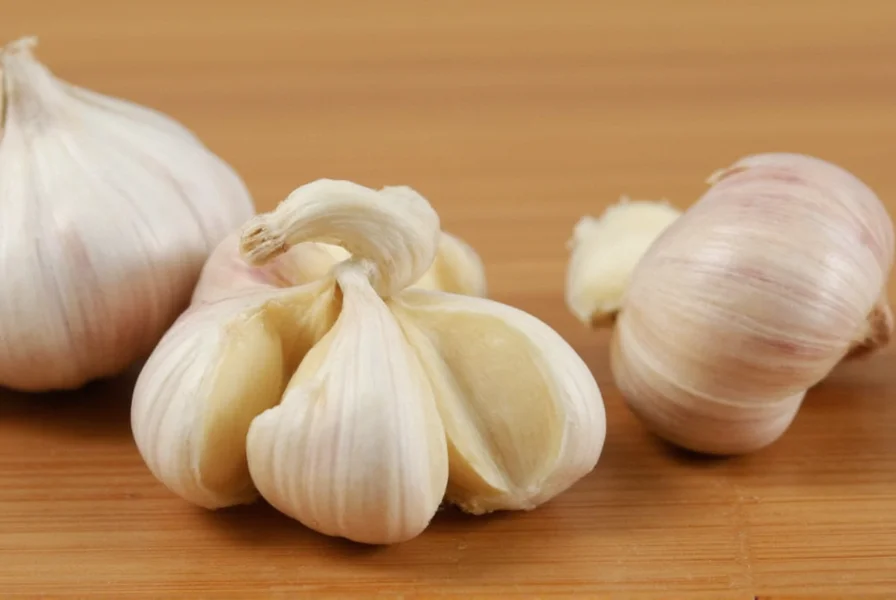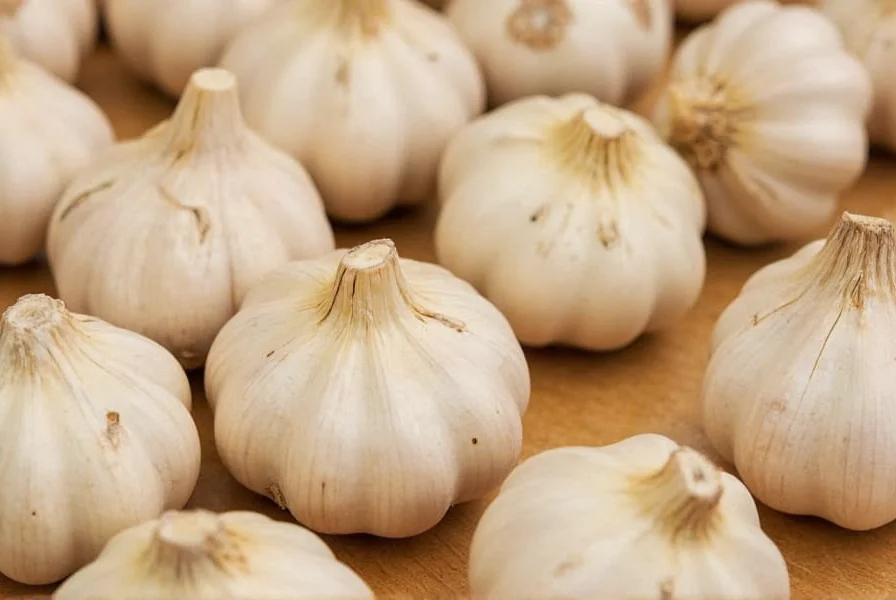Understanding garlic measurements is essential for consistent results in cooking. While garlic cloves vary in size, knowing the standard equivalents helps prevent overpowering or under-seasoning dishes. This guide provides accurate conversions and practical tips for using garlic in recipes.
Why Garlic Measurements Matter in Cooking
Garlic significantly impacts a dish's flavor profile. Too little leaves food bland, while too much creates overpowering bitterness. The active compound allicin, responsible for garlic's distinctive taste and health benefits, varies between cloves. Standardized measurements help maintain recipe consistency whether you're making pasta sauce, roasted vegetables, or marinades.
Standard Garlic Conversions
Garlic size affects yield, but these measurements represent average cloves from standard supermarket bulbs. For precise baking or delicate sauces, weighing provides the most accurate results.
| Garlic Form | 1 Clove | 3 Cloves | 6 Cloves |
|---|---|---|---|
| Minced Garlic | ½ teaspoon | 1½ teaspoons | 1 tablespoon |
| Chopped Garlic | ¾ teaspoon | 2¼ teaspoons | 1½ tablespoons |
| Garlic Puree | ¼ teaspoon | ¾ teaspoon | 1½ teaspoons |
| Weight (grams) | 3 g | 9 g | 18 g |
Factors Affecting Garlic Measurements
Several variables influence how much three cloves of garlic actually measures:
- Clove size: Grocery store garlic typically has medium cloves, while farmer's market bulbs may contain larger or smaller cloves
- Preparation method: Minced garlic packs more densely than roughly chopped pieces
- Maturity: Older garlic heads produce drier cloves with less volume
- Moisture content: Freshly harvested garlic contains more water than stored bulbs
Practical Measurement Tips
When precision matters in recipes, consider these professional kitchen techniques:
For exact measurements, use a digital kitchen scale. Three average cloves weigh 8-10 grams. When mincing garlic, lightly pack it into measuring spoons for consistent volume. If using jarred minced garlic, remember that commercial products often contain preservatives that alter potency—use 20% less than fresh equivalents.
Chefs recommend adjusting to taste when working with garlic. Start with the standard conversion for three cloves of garlic to teaspoons, then taste before adding more. Roasting garlic reduces its sharpness, so you might need slightly more than raw measurements suggest.

When Approximation Works
Not every recipe requires laboratory precision. For soups, stews, and braises where flavors meld during long cooking, approximate measurements work well. However, for aiolis, salad dressings, or delicate seafood dishes, precise how much is 3 cloves of garlic conversions become critical.
Consider these guidelines for different cooking scenarios:
- Baking: Always weigh garlic for consistent results in breads or savory pastries
- Sauces: Use volume measurements for tomato sauces or pesto
- Quick-cooking dishes: Be precise with stir-fries or omelets where garlic doesn't mellow
Garlic Substitutions and Equivalents
When fresh garlic isn't available, these substitutions work in a pinch:
- 1 clove fresh = ½ teaspoon garlic powder (use ⅛ teaspoon for 3 cloves)
- 1 clove fresh = 1 teaspoon garlic juice (1½ teaspoons for 3 cloves)
- 1 clove fresh = ½ teaspoon garlic paste (1½ teaspoons for 3 cloves)
Remember that dried garlic products have more concentrated flavor. When converting three garlic cloves to garlic powder, start with less and adjust to taste. Jarred minced garlic maintains about 80% of fresh garlic's potency, so use 10-15% more than fresh measurements.

Storing Garlic for Consistent Measurements
Proper storage maintains garlic's moisture content, ensuring more consistent measurements over time. Keep unpeeled bulbs in a cool, dark place with good air circulation. Avoid refrigeration, which causes sprouting and texture changes that affect yield. Peeled cloves can be stored in olive oil in the refrigerator for up to two weeks—just remember that oil-packed garlic measures slightly differently due to added liquid.
Frequently Asked Questions
How many tablespoons is 3 cloves of garlic when chopped?
Three average-sized garlic cloves yield approximately 2¼ teaspoons of chopped garlic, which equals just over ¾ tablespoon. For precise measurements, 3 cloves of garlic to tablespoons conversion equals 0.75 tablespoons of chopped garlic.
Does the size of garlic cloves significantly affect recipe outcomes?
Yes, size variations can substantially impact flavor. Small cloves may weigh 1-2 grams each while large elephant garlic cloves can reach 15 grams. When a recipe specifies '3 cloves of garlic weight,' using extra-large cloves could triple the intended garlic amount, potentially overwhelming the dish.
How much jarred minced garlic equals 3 fresh cloves?
Three fresh garlic cloves equal approximately 1½ teaspoons of jarred minced garlic. However, since commercial products vary in concentration, start with 1 teaspoon and adjust to taste, as processing affects potency.
Can I substitute garlic powder for 3 fresh cloves in recipes?
Yes, 3 fresh garlic cloves equal approximately ½ teaspoon garlic powder. However, garlic powder has a different flavor profile—more earthy and less sharp—so adjust according to your taste preferences and the specific dish requirements.
Why do some recipes specify '3 cloves of garlic minced' versus '3 cloves chopped'?
The preparation method affects flavor release. Minced garlic has more surface area, releasing stronger flavor faster—ideal for quick-cooking dishes. Chopped garlic provides milder, more distributed flavor, better for slow-cooked recipes. Three cloves of garlic minced yields about 1½ teaspoons, while chopped yields approximately 2¼ teaspoons.










 浙公网安备
33010002000092号
浙公网安备
33010002000092号 浙B2-20120091-4
浙B2-20120091-4